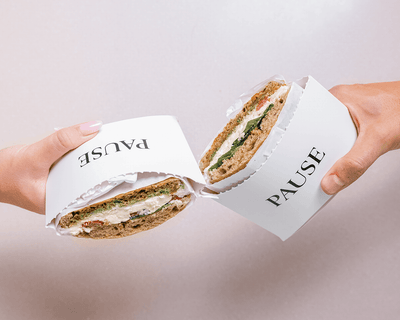The Ultimate Guide to Brie: France’s Iconic Soft Cheese
Brie – a name that conjures the romance of French countryside, leisurely wine tastings, and long, relaxed dinners. But beyond its creamy texture and delicate rind lies a story of heritage, craftsmanship, and culinary elegance. Whether you're an aficionado, a home cook, or a curious taster, this guide walks you through everything you need to know about France's most beloved soft cheese.
What Is Brie Cheese?
Brie is a soft-ripened cheese made from cow's milk, originating from regions next to Paris. Known for its signature bloomy white rind and creamy interior, Brie has a gentle, buttery flavor that becomes more complex with age. The rind, made from Penicillium candidum mold, is not only edible but essential to the development of the cheese’s distinct character.
A Historical Overview of Brie
Brie's history stretches back over a thousand years, with some records claiming that it was a favorite of Emperor Charlemagne as early as the 8th century. During the Middle Ages, Brie became a valued offering at royal courts and religious feasts. By the 19th century, Brie had earned its title as the "Queen of Cheese," a term immortalized during a cheese-tasting contest at the Congress of Vienna. It remains a symbol of French gastronomic heritage.
Varieties of Brie Cheese
There are several types of Brie, each with its own flavor profile and textural nuances:
-
Brie de Meaux is one of the most iconic varieties and holds AOP (Appellation d’Origine Protégée) status. It offers a rich, mushroomy aroma and a bold, earthy flavor. The texture is soft but structured, ideal for slicing or baking.
-
Brie de Melun, also AOP-certified, is known for its stronger, saltier profile and firmer consistency. It has a more pungent aroma and is typically appreciated by seasoned cheese lovers.
-
Double Cream Brie is made with added cream, resulting in a cheese that is luxuriously smooth and more indulgent in flavor. It retains the characteristic white rind but melts more delicately on the tongue.
-
Triple Cream Brie takes the decadence a step further by incorporating even more cream, producing a silky, almost dessert-like mouthfeel. It's often served as a centerpiece at festive gatherings.
The Cheesemaking Process: How Brie Is Created
Crafting Brie is both art and science. The process ideally begins with raw cow’s milk, to which rennet is added to separate the curds from the whey. Once the curds have formed, they are carefully ladled into molds to drain. Over several days, the cheese is turned multiple times to encourage even moisture distribution.
After demolding, Brie is salted and left to age in cool, humid conditions where white mold naturally develops (penicillium candidum). This mold forms the iconic rind and helps break down the cheese from the outside in, creating its soft, creamy interior. Depending on the variety, aging can last from four to eight weeks.
Flavor Profile: What Does Brie Taste Like?
Brie is mild and buttery when young, with hints of fresh cream and grass. As it ripens, the cheese develops deeper flavors, including earthy, nutty, and mushroom-like notes. The rind contributes a subtle bitterness that balances the richness of the interior. The contrast between the slightly firmer exterior and the oozing center is one of Brie’s most enchanting qualities.
Brie vs. Camembert: Understanding the Distinction
While Brie and Camembert are often compared due to their similar appearance, they differ in several key areas. Brie originates from regions East of Paris, while Camembert hails from Normandy. Brie wheels are typically larger, which affects their ripening process and results in a milder flavor. Camembert, being smaller, ripens more quickly and tends to have a stronger, more concentrated taste. Texturally, Brie is often creamier, while Camembert can be slightly denser. Both are delicious, but they offer distinct tasting experiences.
Proper Storage of Brie Cheese
Brie is best stored in the refrigerator, wrapped first in wax or parchment paper to allow it to breathe, and then loosely covered with plastic wrap or placed in an airtight container. Avoid aluminum foil, which can affect the flavor. Once opened, Brie should be consumed within one week. While it is possible to freeze Brie, doing so can alter its texture, making it better suited for cooking rather than cheese boards.
Serving Brie: A Centerpiece Cheese
Brie is best served at room temperature to allow its full flavor and creamy texture to shine. Let the cheese sit out for 20 minutes before serving.
Suggested accompaniments include:
-
Fresh fruits such as grapes, apples, and figs
-
Toasted nuts like almonds and walnuts
-
Crackers or slices of French baguette
-
Honey, or fig jam
Wine Pairings:
-
White wines: Chardonnay, Champagne
-
Red wines: Pinot Noir, Beaujolais
These combinations highlight the cheese's subtlety and create a well-rounded tasting experience.
How to Cut Brie the Right Way
To ensure a pleasant presentation and fair portions, use a sharp, thin-bladed knife. Begin at the center of the wheel and slice outward, like cutting a cake. Always keep the rind intact for others, as it enhances both flavor and structure.
Is the Rind Edible?
Absolutely. The bloomy white rind is not only edible but essential to the Brie experience. It imparts a mild earthiness and helps maintain the cheese’s shape as it matures. Some may find it an acquired taste, but skipping the rind is like reading only the middle chapters of a great novel.
Brie in the Kitchen: Versatility Beyond the Cheese Board
Brie can be used in a wide variety of dishes, both savory and sweet:
-
Baked Brie: Encase in puff pastry with jam or nuts and bake until golden.
-
Brie Pasta Sauce: Melt into a creamy sauce with garlic and white wine.
-
Stuffed Chicken: Insert Brie slices into a chicken breast before baking.
-
Gourmet Pizza: Use Brie with caramelized onions, arugula, or pears.
Brie melts beautifully and adds a touch of sophistication to any dish.
Health and Nutrition Benefits of Brie
Although Brie is a rich cheese, it offers several nutritional benefits when consumed in moderation. It is a good source of calcium, essential for bone health, and provides high-quality protein. Brie also contains vitamin B12, which supports nerve and brain function. While high in saturated fats, its indulgent texture means a little goes a long way.
Where to Find Authentic French Brie
To enjoy the best Brie, seek out specialized cheese shops or gourmet sections of supermarkets. Look for Brie de Meaux or Brie de Melun with AOP certification to ensure authenticity. Many online retailers also offer quality Brie with refrigerated shipping. If possible, opt for Brie that has been imported directly from France for the truest experience.
Fun Facts About Brie Cheese
-
Brie was once used as a form of currency in medieval France.
-
Napoleon Bonaparte called it the "king of cheeses."
-
France produces over 1,200 types of cheese, and Brie consistently ranks among the top favorites.
Why Brie Deserves Your Attention
Brie is more than a cheese; it's a culinary tradition that has stood the test of time. Its delicate texture, nuanced flavors, and rich history make it a staple not only in French cuisine but around the world. Whether savored on its own, paired with wine, or used in a gourmet dish, Brie brings elegance and depth to every bite. Once you've tasted a perfectly ripe wedge, you'll understand why it reigns as the queen of cheeses.
FAQs
1. Can Brie be frozen? Yes, although freezing alters its texture. It’s best used for cooking after being frozen.
2. What wine pairs best with Brie? Light reds like Pinot Noir and whites like Chardonnay complement Brie beautifully.
3. How long does Brie last after opening? Once opened, Brie should be consumed within 1 week if stored properly in the refrigerator.
4. How can I tell if Brie has gone bad? If the cheese smells strongly of ammonia or develops unusual dark colors or textures, it's best to discard it.









